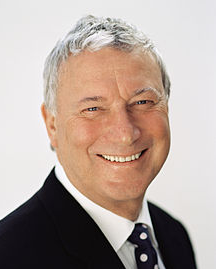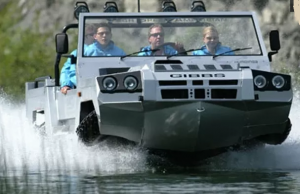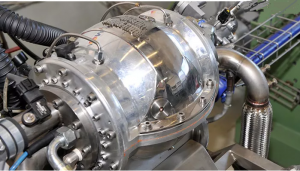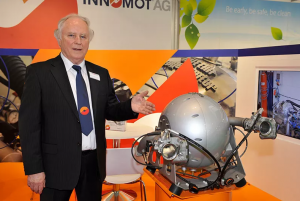
Water Taxi within a year on the Thames





Humdinga, a high-speed amphibious nine-seater taxi could be brought to river Thames near the O2 Arena within the next 12 months, under plans to beat congestion and could halve journey times between east and west London. The vehicle wheels fold beneath the 23ft carbon fibre chassis in less than five seconds upon hitting the water and has a powerful engine to travel at more than 30 mph on water –three times as fast as existing vehicles and 80mphon roads. The inventor and Kiwi entrepreneur Alan Gibbs of Gibbs technologies, based in Nuneaton claims that it is very near to a deal to mass-produce the amphibious taxi, which could be running on the Thames within a year. The same technology could be adapted to other cities like Glasgow, Liverpool, New York or San Francisco.
The Thames has a speed limit of 12 knots just under 14 mph and vehicles should also be licensed by Port of London Authority before carrying passengers. Neil Jenkins of Gibbs said, “ The Thames is severely under-utilised and this is all about using it as a thoroughfare, as it was in the 1700s and 1800s.”
Gibbs has built eight vehicles from a water motorbike, and quad bike to truck capable of carrying two tonnes. The fastest travel at 45mph on water and 80mph on land.
Dr Herbert Huttlin is a 67-year-old flow engineer with over 150 patents to his name, mostly in the field of pharmaceutical production machinery. In 1991, he looked at the traditional Otto/Diesel combustion engine with a view to enhancing efficiency. After twenty years and three design iterations and help from Freiburg University, he has created a compact Spherical motor/Generator combination that is radically different from the traditional in-line combustion engine with fewer moving parts. Two opposing curved twin-piston heads rock on the same bearing and when they are, pushed apart the opposing pistons are pushed together, as this is a four-stroke engine the cycle will be induction (apart), compression ( together), Combustion ( apart) and exhaust (together). The effect of rocking the cylinder heads back and forth on the top of each of the four piston heads is a large titanium ball bearing that runs in a channel that is circular in one axis and a sine wave in the other.
The channel encompasses the pistons completely and their rocking causes them to rotate on an axis perpendicular to their bearing axis by swimming along the channel. Fixed to one side of the spherical aluminium housing is the ball-bearing guide channel and on the other side there is a permanent magnet ring attached to the rotation axis of the cylinders. Fixed to the inside surface of the enclosing sphere is a ring of electromagnetic coils and the interaction with the spinning magnet causes the generation of electricity.
